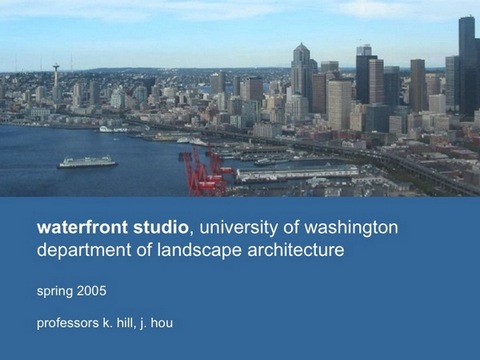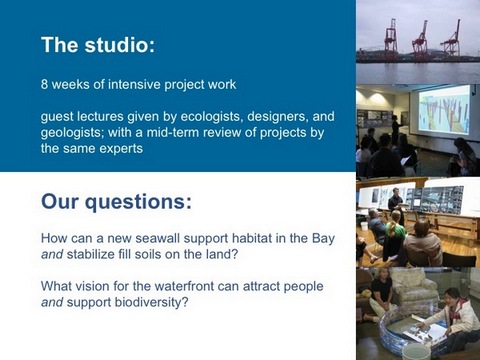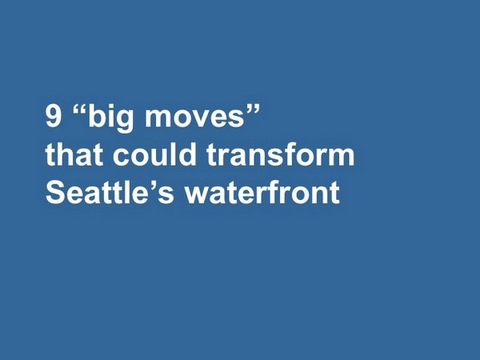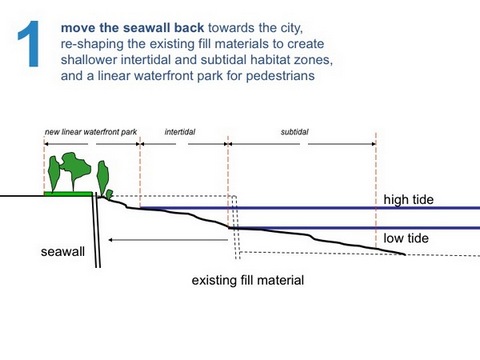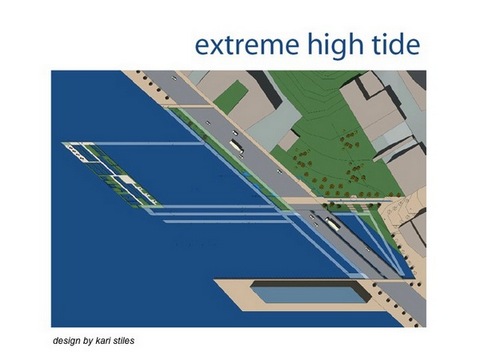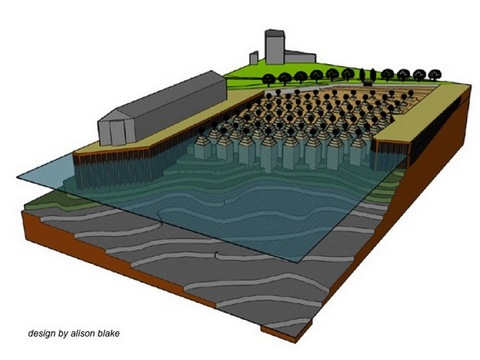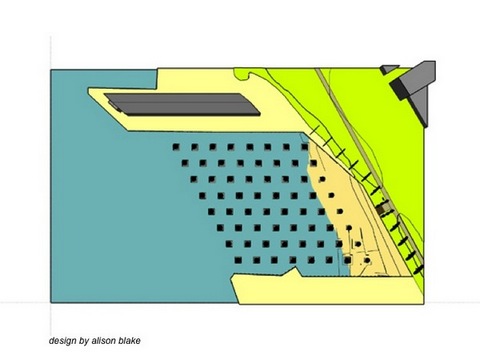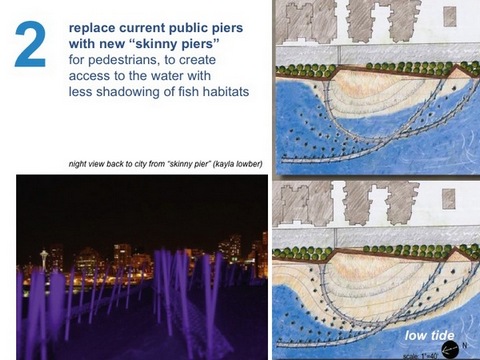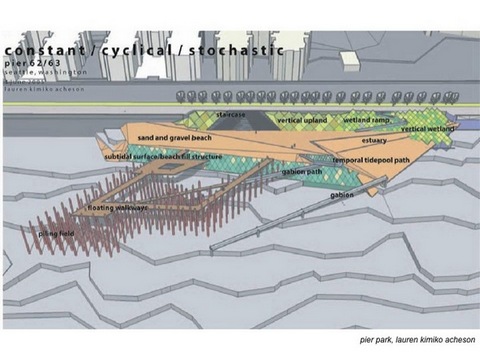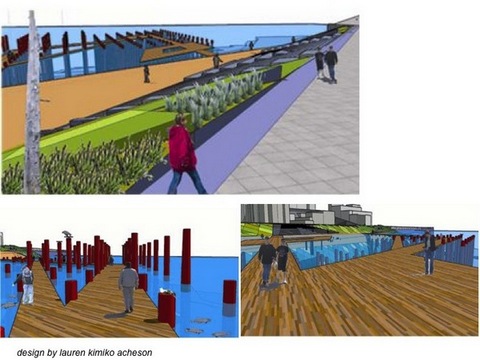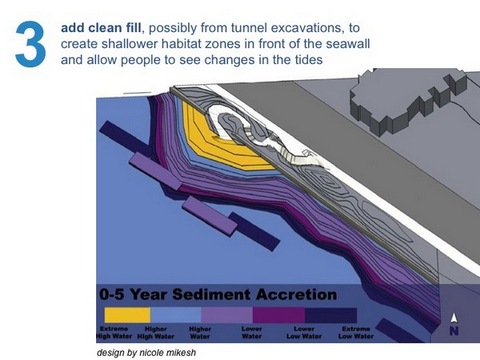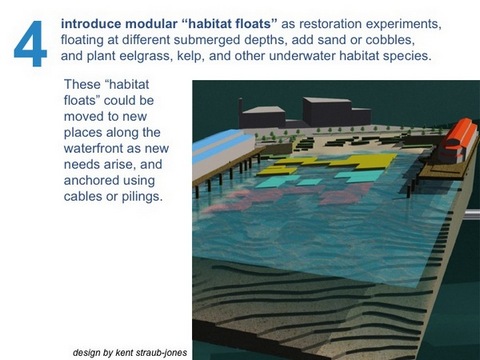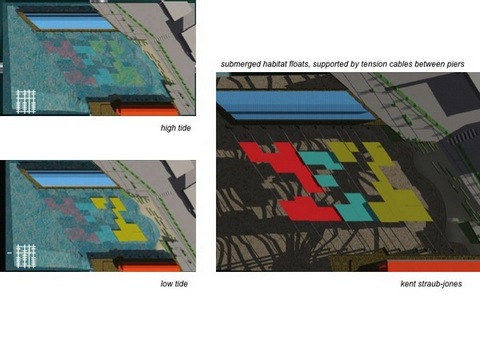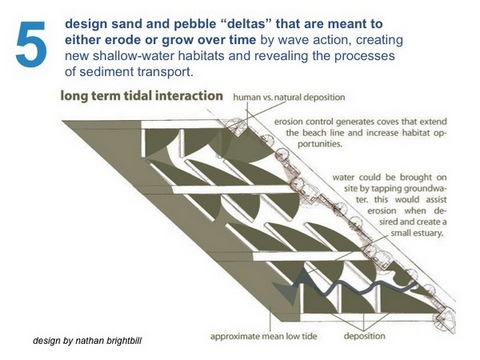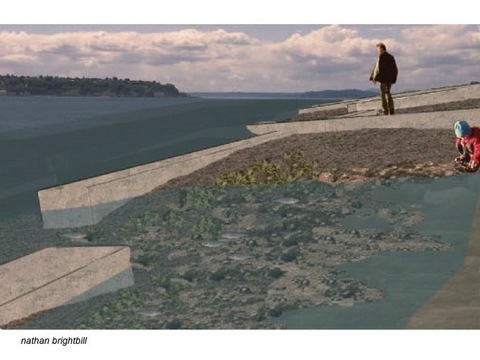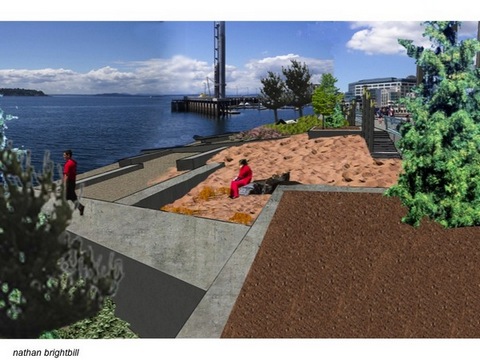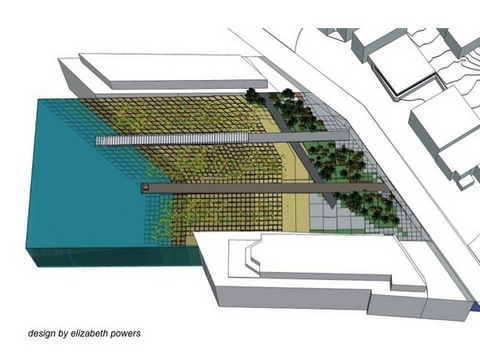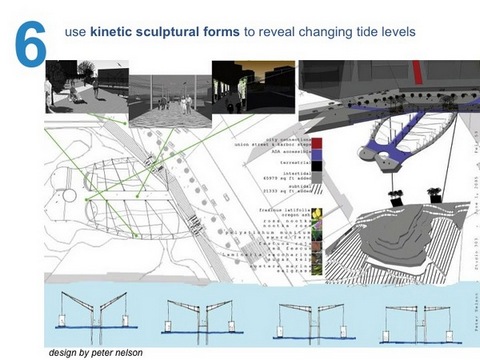In spring 2005, the Department of Landscape Architecture at University of Washington was contracted by the Seattle City Council to examine possibilities of creating near-shore habitats in the Central Waterfront while providing public access and amenities. The project was carried out through a design studio in which students were asked to design for two specific sites on the waterfront-the Waterfront Park and the Piers 62/63, where the depth of water is most suitable for habitat functions. With an emphasis on enhancing habitat value using built structures and strategic interventions, the studio produced a range of design strategies and devices that recognize the physical constraints and possibilities of the urban sites.
In terms of creating near-shore habitats, the strategies included accretion and erosion of materials to allow for gradual building of shallow water conditions along the concrete edge. Another set of strategies included design of floating structures to simulate conditions of different tidal zones for different habitat environments. The structures that support the accretion of materials and functions of the floating platforms in turn also allow for public use of the water’s edge. They provide not only access to the waterfront but also opportunities to learn and observe the dynamic changes at this urban edge.
Summarized as 9 BIG MOVES, the work produced from the studio informed and challenged the ongoing debate concerning the future of Seattle’s Central Waterfront that has predominantly been focused on transportation priorities rather than ecological and greater public values.
To find out more, visit http://courses.washington.edu/ecodsgn/
